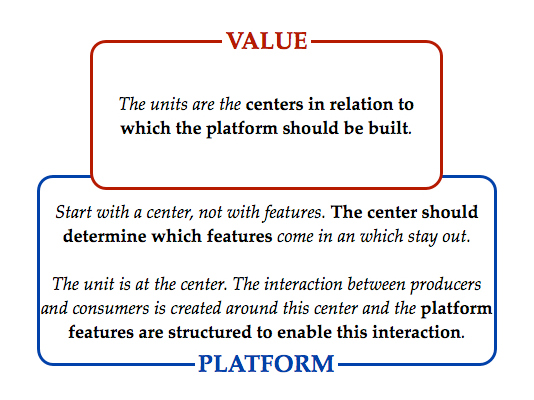Concepts
How small ideas like Twitter, WhatsApp, and Airbnb create large value through network effects
The Power of Platforms: How Interactions Create Value
Twitter: You can use this to type 140 characters
WhatsApp: Just like SMS but doesn’t cost much
Airbnb: Rent out your spare mattress
Uber: Just another taxi company to many
Over the last week, I’ve been hearing people in the startup world repeatedly scratching their heads on how a simple app like WhatsApp got bought for $19B. There is a lot of speculation in non-tech circles on why a software that does nothing but let you type 140 characters is valued at multiples of billions. What’s the big deal about Uber when it seems like just another taxi company?
The fact is that when it comes to platforms, the technology often isn’t the reason people use it at all. I don’t intend to discuss the above valuations and their legitimacy in this post. Instead, I’d like to talk about the real value that is created on platforms.
Most platforms look like stupid ideas when they have no users.
When startups complain that simple apps like WhatsApp get bought, they completely miss the point. In fact, even valuation experts miss the point when they start valuing companies based on their user base and the rate of user growth. None of these things matter.
What really matters – the one metric that platforms should really be judged on– is the rate at which value is created on the platform. Airbnb is valuable when it powers a liquid marketplace, with millions of transactions. Twitter is valuable when tweets are created, retweeted and responded to.
The value of a platform is created by the interactions on top of the platform.
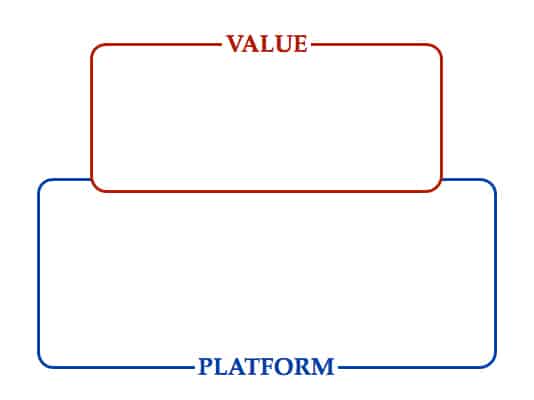
The value is neither in the technology nor is it in the rate of user growth. The value is in the activity that exists on the network of users. What matters about WhatsApp is not the fact that it is a ‘stupid messaging app’ nor just the fact that it has 450 M users, but the fact that this network of users creates tremendous value for each other through interactions; enough to hook 72% of its user base on a daily basis.
But what does value really mean? And if it’s not about the technology, what is the platform’s role in enabling this value creation?
Over the last few days, I’ve tried on various occasions to explain WhatsApp, Twitter, Instagram, Uber and Airbnb to skeptics, most of whom aren’t directly involved with tech, and in the process have ended up using multiple metaphors to explain how value is created on platforms.
From Lego to Soccer and everything in between. If nothing else, the one point that we need to embrace as platform builders is this:
We’re not in the business of building software!
We’re in the business of enabling interactions!
Lego: When Platforms become Child’s Play
At The Lego Movie a few days back, my mind again wandered to platforms, as is its wont. Typically, while building entire towns and physical spaces out of LEGO, one tends to create a base first and then build out other elements (buildings, trees, etc.) and attach them to this base.
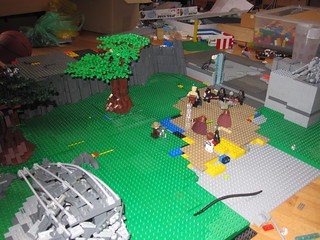
Platforms work in a similar way by providing an underlying infrastructure on which others build and add value. Android provides the underlying infrastructure for creating applications on top; YouTube provides the base for creating videos on top and Etsy provides a base for creating product listings on top.
In all these examples, the base has no value without the units that are built on top of it. These units represent value. The platform becomes more valuable as more units get added on top of it. These units become inventory for the platform if you will.
Since LEGO is physical and has tangible building blocks, one is tempted to think in terms of content platforms or app platforms where content or apps created on top of the platform have some tangibility. However, this metaphor extends to anything that can be added onto the platform that increases its value e.g. Uber drivers stream their availability and location, thus adding value (and inventory) to the platform.
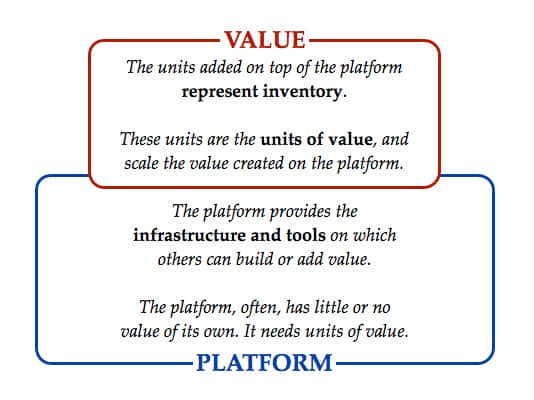
FedEx: Movement on a network
Let’s move away from the notion of platform-as-underlying-infrastructure and think of the platform-as-a-network-of-transfer.
I’ve talked about this before. FedEx works like a network; it delivers packets from a source to a destination. Here’s how FedEx gets it right most of the times (and I’m again oversimplifying for illustration):
- It gathers data from the sender (source) about the recipient (destination) (Address etc.)
- It converts this data into some internal code to give routing instructions to everyone involved in the transfer
- It delivers the package
Routing, a concept from network theory, is the process of selecting the best path on a network.

There are two key aspects of networks like FedEx:
- Packages move around
- Packages carry some information that enables the network to send them to the right destination
Every platform is responsible for the transfer of packages from source to destination.
Twitter transfers Tweets from tweet creators to tweet readers.
YouTube transfers Videos from Video creators to Video viewers.
LinkedIn transfers Jobs from Recruiters to Professionals.
Airbnb transfers Apartment listings from Hosts to Travelers.
Uber transfers a Cab request from a Traveler to a Cabbie.
All of these platforms rely on the ability to correctly transfer information (and content) from the source to the destination.
While it is important to think of YouTube as an infrastructure on which users host videos, it is also important to see YouTube’s role in transferring videos to the right consumers. This is where the platform needs information to correctly recommend and serve videos.
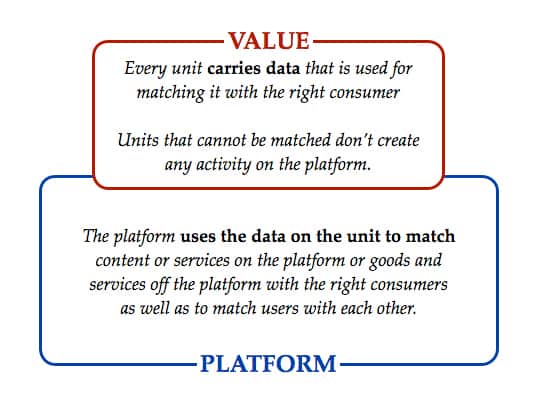
Sparks, Catalysts, and Reactions
Let’s think again about these units that we have been talking about. These units always start off an interaction between a producer and a consumer. You need an Uber driver to be available and around for him to be matched to a traveler. You need a listing to be put on eBay or Etsy to enable any commerce. And going deeper, you need a seller to set up an instance of her product on PayPal for a buyer to buy it using PayPal.

In all these cases, the unit sparks the interaction. David Evans, in his book The Catalyst Code, talks about sparks that start exchanges and catalysts that enable these exchanges but never gets quite specific about what the spark is.
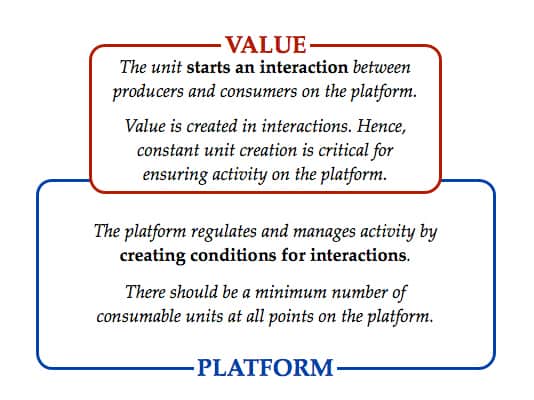
Twitter, WhatsApp, and Instagram change how we think of value in the Platform Economy.
Feel Free to Share
Download
Download Our Insights Pack!
- Get more insights into how companies apply platform strategies
- Get early access to implementation criteria
- Get the latest on macro trends and practical frameworks
Soccer: Thinking social and interactions
Think of a game of soccer or ice hockey. The game always has a central point of focus: the ball or the puck. Spectators do not view the stadium or rink as a whole; they are solely fixated on three things:
- The ball or the puck
- Who has control of the ball or puck now
- Who is likely to receive/intercept it next
The ball or puck is the center of a social interaction here. Social interaction between two or more parties always has a center. The initiator and the recipient of the interaction are determined relative to this center.

Moving back to platforms, every platform facilitates interactions between producers and consumers. These interactions always occur around a center, much like the ball or puck. Much like the rules of play in a game and the role of the referee, the platform’s purpose is to provide the conditions that are necessary for such interactions to occur efficiently.
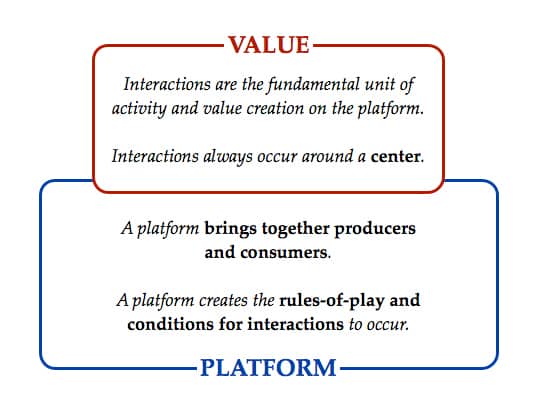
The Nature of Order: Ask the Architect
When thinking about design – of products, platforms or business overall – I’ve always found it useful to learn from those who do this for a living: Architects. While the physicality of real world design is different from what we look at while building digital systems, the fundamental aspects remain the same.
In The Nature of Order, Christopher Alexander makes a great case for inverting how we think about design. Here’s the gist: If you’re going to design a building, you don’t start by thinking of the building. When architects get down to thinking on paper, they start with a center and build things around that and in relation to that.

The actual argument is much more nuanced but what I find extremely compelling is the notion that we might be missing the point in thinking in terms of wholes. When we look at a website or an app, we see it as a whole. We don’t see a center there.
The more complex a system, the more difficult it’s going to be to understand it as a whole. Thinking in wholes, forces us to start thinking about features. This is where it becomes super-helpful to think of centers.
When building a platform, it is super-important that features are not the starting point. Features should, instead be built around a center. The center determines how platform users will interact, and leads to what kinds of features the platform should have to enable these interactions.
If we think of YouTube, Airbnb or Threadless, every feature that is built out there is built in relation to the video, the listing or the graphic. You don’t have features for the sake of having features. In the initial days of any internet startup, in particular, a definite way to mess things up is by thinking in terms of features and ending up with something clunky. The closer one aligns each and every feature with the center; the more intuitive the platform’s use is.
This ties back to how we think about Pipes (linear businesses) as well. Toyota builds out a factory starting with the car (end product) in mind. If it goes about adding things to the factory without the car in mind, it ends up with bloatware. The same thing happens on digital platforms.
THINKING ABOUT PLATFORMS
If you’ve read the previous posts in the series, you would have related by now that these units are the ‘seeds’ that I refer to in the previous post.
The idea of this unit of value as a building block of the platform is very central to understanding platforms.
However, I’m not entirely convinced that ‘seed’ is the best way of describing this unit.
At this point, I’d like to throw this open. Based on the above, what would you call this? What name would you give this? There are several elements to what these units are, and we’d need to come up with a name that captures these elements.
So let’s recap the various properties of these units:
- Unit of value: What adds value to the platform and without which the platform has little or no value?
- Unit of exchange/transfer: What do platforms carry and transfer between producers and consumers?
- Represents the job to be done: What is the information required to get the job done? The unit represents the job to be done. It is the information that is required to get that job done. (Credit: Kevin Carroll, comments below)
- Unit of production and consumption: What is created by producers and consumed by consumers on the platform?
- Something created on top of the platform: What is created on top of the platform? What can be attached on the platform that complements and extends its functionality?
- Unit of information required to start an interaction: What is the basic unit of information that needs to be created and consumed for the exchange/consumption of content, goods and services to happen?
- Pre-condition to activity: What is a pre-requisite on the platform without which producers and consumers do not interact with each other? What is that spark or ignition to start it?
- Center of interaction: What is the centre around which the interaction between producers and consumers gets structured?
Should we call it the seed, the value unit, the spark, the core, something else? Which word do you think makes the most sense? Would you mind choosing one at the link below that most closely explains what we’re trying to say here?
Thanks for helping out above!
 :
In Summary…
This is the enduring message about platforms. Value them for what value really is when it comes to platforms: not technology, not user growth, but network effects. And network effects are determined by these units that are created on the platform. These units are the fuel that run platforms and make them worth billions of dollars.
Tweetable Takeaways
WhatsApp value is in the interactions (stickiness), not in the technology or user growth alone. Tweet
Twitter, WhatsApp, and Instagram change how we think of value in the Platform Economy. Tweet
The Platform Economy isn’t about technology, it’s about interactions that are enabled by technology. Tweet
To read the rest of the posts in this series, click here.
State of the Platform Revolution
The State of the Platform Revolution report covers the key themes in the platform economy in the aftermath of the Covid-19 pandemic.
This annual report, based on Sangeet’s international best-selling book Platform Revolution, highlights the key themes shaping the future of value creation and power structures in the platform economy.
Themes covered in this report have been presented at multiple Fortune 500 board meetings, C-level conclaves, international summits, and policy roundtables.
Subscribe to Our Newsletter




